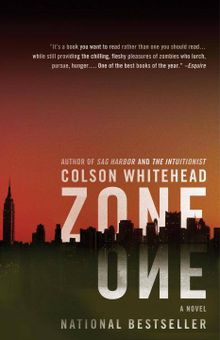


However, its hollowness, lack of depth and monotone emotionlessness make the interior a soulless, vacuous fail. Alternating between flashbacks of Spitz’s desperate fight for survival during the worst of the outbreak and his present narrative, the novel unfolds over three surreal days, as it depicts the mundane mission of straggler removal, the rigors of Post-Apocalyptic Stress Disorder, and the impossible job of coming to grips with the fallen world.īoth spine chilling and playfully cerebral, Zone One brilliantly subverts the genre’s conventions and deconstructs the zombie myth for the twenty-first century.Īttractive, well-dressed writing and some buxom, sexy phrase-turning make this novel’s surface shiny and pretty. Mark Spitz is a member of one of the civilian teams working in lower Manhattan. While the army has eliminated the most dangerous of the infected, teams of civilian volunteers are tasked with clearing out a more innocuous variety-the “malfunctioning” stragglers, who exist in a catatonic state, transfixed by their former lives. Armed forces have successfully reclaimed the island south of Canal Street-aka Zone One-but pockets of plague-ridden squatters remain.

Their top mission: the resettlement of Manhattan. Now the plague is receding, and Americans are busy rebuilding civilization under orders from the provisional government based in Buffalo. The plague has sorted humanity into two types: the uninfected and the infected, the living and the living dead. In this wry take on the post-apocalyptic horror novel, a pandemic has devastated the planet.


 0 kommentar(er)
0 kommentar(er)
